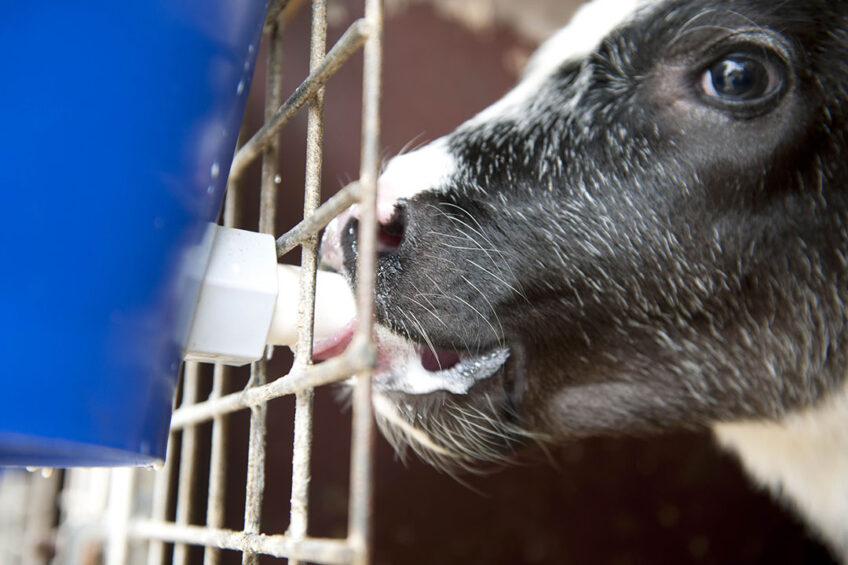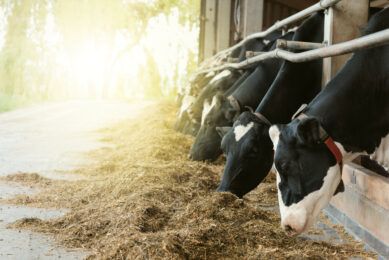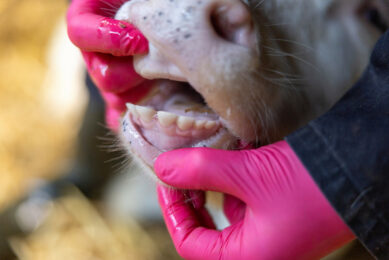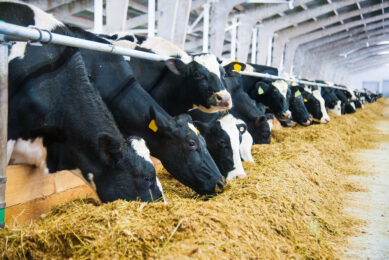Milk replacer: Exchanging lactose for fat

A new study looked at the effect of energy source in calf milk replacer on performance, digestibility, and gut permeability in rearing calves. The study has been recently published in the Journal of Dairy Science.
The current global trend in dairy calf rearing is to focus on growth performance using whole milk (WM) or calf milk replacers (CMR) of high nutritional quality. This is the consequence of recent insights suggesting that nutrient intake from WM or CMR during the preweaning period improves future milk yield. Compared with most commercial CMR, WM has higher energy content and contains bioactive components such as enzymes, hormones, and growth factors. To compensate for differences in energy supply between WM and CMR, several strategies have been used to accelerate the growth rate of calves during the milk phase. These strategies include higher feeding rates or modifying the milk replacer composition to increase nutrient intake. Several studies show that increasing the fat content in CMR can affect growth and performance of calves.

Exchanging dietary energy sources
Researchers from the Netherlands wanted to delve deeper into this issue. Their hypothesis was that a weight for weight exchange of lactose for fat in CMR would positively affect performance and gastrointestinal health in rearing calves fed twice daily. To this end, the objective of the current study was to investigate the effects of exchanging dietary energy sources (fat vs. lactose) on growth performance, intestinal permeability, digestibility, and faecal score consistency in rearing calves. To do this, a trial was done in which a total of 60 male Holstein-Friesian calves were assigned to 1 of 30 blocks based on serum IgG, body weight, and date of collection after birth. Within each block, calves were randomly assigned to 1 of 2 treatments: high fat and high lactose. The CMR was provided twice daily until 49 d of age, followed by a gradual weaning period of 14 d. Starter, straw, and water were available ad libitum throughout the complete study.
Also read: Feeding field beans: Watch the milk quality
Better faecal scores
The researchers showed that exchanging lactose for fat did not affect growth; intakes of starter, straw, water, crude protein, or total energy; or apparent total-tract digestibility of nutrients. Gastrointestinal permeability was assessed by measuring the recovery of lactulose and Cr in 24-h urine and the Cr concentration and lactulose:D-mannitol ratio in serum following an oral pulse dose. Urinary recoveries of Cr and lactulose were generally low in both treatments but were higher in calves fed the high-fat CMR. Accordingly, the serum lactulose:D-mannitol ratio and serum Cr concentrations were higher in calves fed the high-fat CMR. In week 1 and during the weaning transition, calves fed the high-fat CMR had significantly fewer abnormal faecal scores. In conclusion, exchanging lactose for fat in the CMR did not affect growth performance, total feed intake, or nutrient digestibility. The high-fat CMR was associated with an increase in permeability markers but positively influenced faecal scores in calves.
Source: Journal of Dairy Science
Join 13,000+ subscribers
Subscribe to our newsletter to stay updated about all the need-to-know content in the dairy sector, two times a week.










